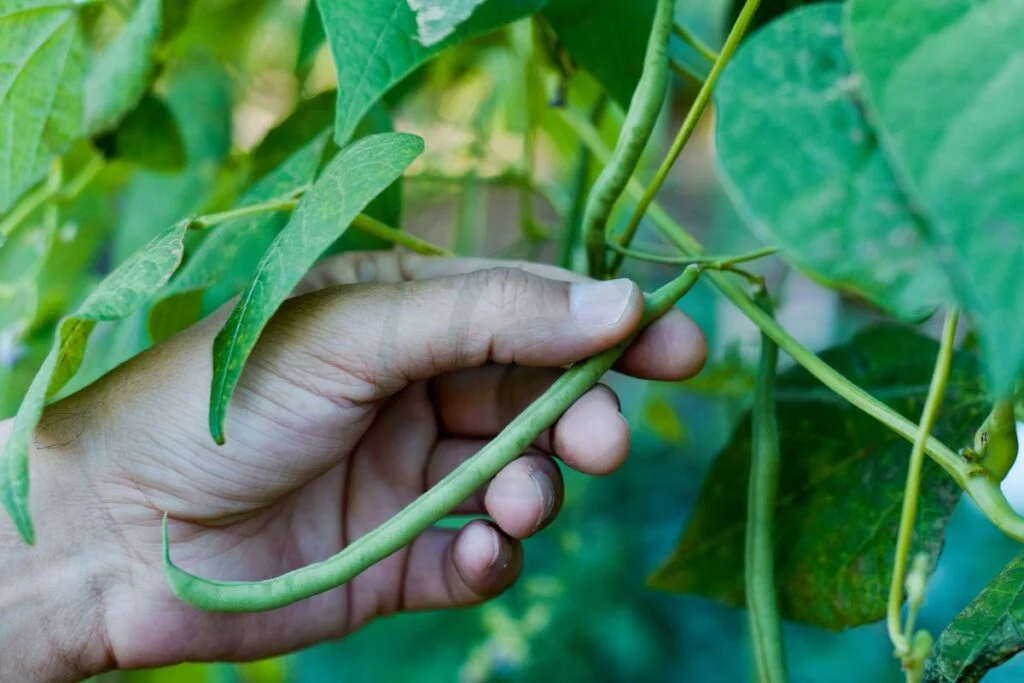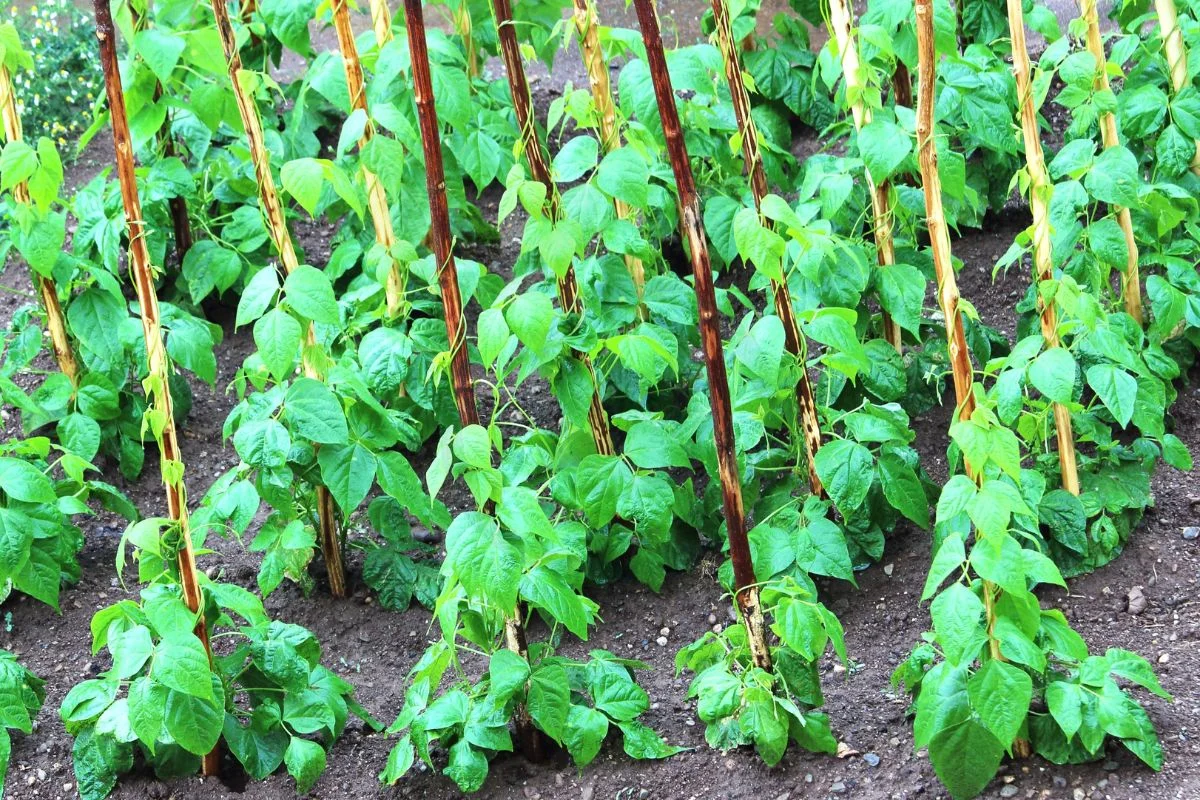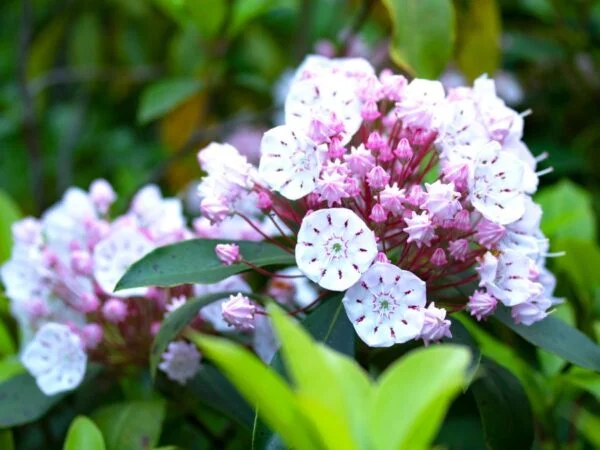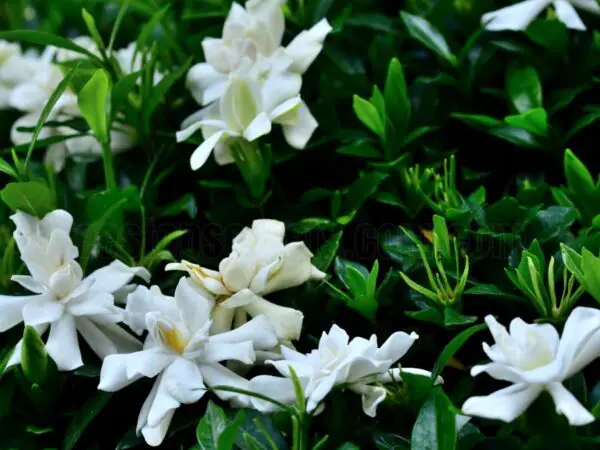Wondering how far apart to plant green beans in a home garden for a bountiful harvest? Understanding the optimal spacing for your green bean plants is crucial for their growth and yield. By planting them at the correct distance, you can ensure they have ample room to thrive and produce an abundance of delicious beans.
Planting green beans at the right distance is essential to promote healthy growth, prevent overcrowding, and maximize your harvest. In this guide, we will delve into the ideal spacing requirements for green beans in rows, offering expert tips and advice on achieving optimal results in your garden. Stay tuned to learn more about the best practices for planting green beans and cultivating a successful crop.
Key Takeaways
- Planting Distance: Different green bean varieties require specific spacing for optimal growth; follow guidelines for each type to ensure proper development.
- Soil Preparation: Adequately prepare the soil by loosening it and incorporating organic matter to provide a nutrient-rich environment for green bean plants.
- Planting Depth: Plant green beans at the recommended depth to promote strong root development and healthy plant growth.
- Fertilization Schedule: Implement a fertilization schedule that suits the needs of green beans at different growth stages to support vigorous plant growth.
- Watering Consistency: Maintain consistent watering practices, ensuring that green beans receive sufficient moisture without becoming waterlogged.
- Pest and Disease Monitoring: Regularly inspect green bean plants for pests and diseases, taking proactive measures to prevent and address issues promptly.
Green Bean Varieties
Bush Beans
Bush beans are compact and self-supporting, making them perfect for small gardens or containers. Harvest these beans by handpicking when pods are firm and crisp. Their size makes them ideal for limited garden spaces.
Pole Beans
Pole beans require support structures like trellises to climb vertically. Harvest pole beans when they are young and tender for the best flavor. These beans maximize vertical space in your garden efficiently.
Selecting Varieties
When choosing green bean varieties, consider factors like flavor preference, size, and growth habit. Look for disease-resistant options suitable for your climate. Popular choices include Blue Lake, Kentucky Wonder, and Provider varieties.
Preparing for Planting
Soil Conditions
Green beans require soil with a pH of 6.5 for optimal growth, slightly acidic to thrive. Test the soil for nutrients and make necessary amendments before planting. It's crucial to have well-draining soil to prevent waterlogging, which can harm the roots.
Planting Time
For best results, plant green beans after the last frost date in your area. These plants prefer warm soil temperatures above 60°F (15°C). Consider planting in early spring or late summer to extend the harvest season.
Site Selection
Select a planting site with at least 6 hours of direct sunlight daily for healthy green bean growth. Avoid areas prone to strong winds that can damage plants. Choose a location near a water source for easy irrigation during dry spells.
Planting Techniques
Spacing Guidelines
Bush Beans
- Plant bush beans in rows that are 18-24 inches apart to allow ample space for growth.
- Ensure there is a distance of 2-4 inches between each seed when planting bush beans.
- Proper spacing promotes adequate airflow, reducing the risk of diseases and pests.
Pole Beans
- For pole beans, create rows 3 feet apart to accommodate their climbing nature.
- Space pole bean seeds 6-10 inches apart along a trellis or support structure for vertical growth.
- Utilizing poles or trellises maximizes space efficiency in your garden.
Depth and Orientation
- Plant green bean seeds around 1 inch deep in the soil for optimal germination rates.
- Ensure the seeds are placed with the eye facing down to facilitate proper sprouting.
- Consistent seed depth is crucial for uniform germination and subsequent plant development.
Fertilization Practices
Nutrient Needs
Green beans thrive with a balanced fertilization approach using a 5-10-15 fertilizer ratio. This blend provides essential nutrients for robust growth. Adequate phosphorus levels in the soil are crucial for healthy green bean development. Throughout the growing season, it's vital to monitor soil fertility levels and adjust fertilization accordingly.
Application Timing
At planting time, apply fertilizer to supply crucial nutrients for initial growth. After the first beans emerge, consider fertilizing again to sustain plant health. Be cautious of over-fertilization, as it can result in excessive foliage growth at the expense of bean production.
Watering Methods
Frequency
- Fertilize green beans periodically during the growing season to maintain plant vigor.
- Adjust the frequency of fertilization based on plant growth and nutrient uptake.
- Monitor plant health indicators to determine the need for additional fertilization.
Techniques
- Use organic fertilizers like compost or aged manure to improve soil structure and fertility.
- Employ mulching techniques to conserve soil moisture and suppress weed growth.
- Practice crop rotation to prevent nutrient depletion and reduce disease pressure.
Growth Maintenance
Thinning Seedlings
When thinning green bean seedlings, ensure they are spaced appropriately for optimal growth conditions. Eliminate weaker seedlings to provide ample space for the healthier plants. This practice encourages better air circulation, sunlight exposure, and overall plant development. By reducing overcrowding, thinning promotes healthier plants and higher yields.

Supporting Structures
To support pole beans effectively, consider installing trellises, cages, or stakes. These structures prevent sprawling growth and maintain plant stability. Opt for eco-friendly materials like bamboo or wooden stakes to align with sustainable gardening practices. Regularly inspect and maintain these supporting structures to ensure their durability and functionality over time.
In the previous section on "Watering Methods," we discussed the importance of providing adequate moisture for green beans. In conjunction with proper watering techniques, thinning seedlings and using supporting structures play crucial roles in fostering healthy plant growth.
Harvesting Techniques
Signs of Readiness
Harvest green beans when the pods look firm, crisp, and have a bright green color. Pods are at their prime for picking when they easily snap and contain small seeds. Avoid gathering overripe beans as they might be tough and less tasty.
- Firm, crisp, bright green pods indicate readiness
- Snap easily with small seeds inside
- Overripe beans can be tough and less flavorful
Harvesting Process
Gently pull green beans from the plant to prevent damage to the vines. Regularly picking beans promotes continuous production throughout the growing season. After harvesting, store the beans in a cool, dry place or opt for canning to preserve them for long-term use.
- Gently pull pods to avoid vine damage
- Regular picking encourages continuous production
- Store in cool, dry place or consider canning
Common Problems
Pests
Watch out for common pests like aphids, bean beetles, and caterpillars that can damage green bean plants. Implement natural pest control methods such as handpicking or introducing beneficial insects. Monitor plant health regularly to detect pest infestations early and take appropriate action.
Diseases
Be vigilant for diseases like powdery mildew, bacterial blight, and root rot that can affect green beans. Practice good garden hygiene by removing diseased plant material and debris promptly. Use disease-resistant green bean varieties to minimize the risk of infections.
From Planting to Harvest
Timeline Overview
Green beans mature for harvest in 45 to 60 days post-planting, ensuring a quick turnaround for fresh produce. Planning your planting schedule strategically allows for a continuous supply of fresh green beans throughout the season. To optimize production, track essential milestones like planting, fertilizing, and harvesting.
- Keep an eye on key dates: planting, fertilizing, and harvesting.
- Ensure a consistent supply of fresh green beans by planning your planting schedule effectively.
- Optimizing production requires meticulous tracking of milestones such as planting and harvesting.
Care Milestones
Regularly monitoring soil moisture levels is crucial to maintain adequate hydration for green bean plants. Promptly address any signs of nutrient deficiencies through timely fertilization. Stay vigilant in managing pests and diseases to protect the health and productivity of your green beans.
- Maintain soil moisture levels consistently to support healthy plant growth.
- Address nutrient deficiencies promptly by providing appropriate fertilization.
- Safeguard the health and productivity of green beans by proactively managing pests and diseases.
Final Remarks
You now have a solid understanding of planting green beans, from selecting the right variety to harvesting your crop. By following the techniques outlined, you can ensure a successful green bean harvest in your garden. Remember to prepare the soil adequately, space your plants correctly, and provide consistent care throughout the growing season. Keep an eye out for common problems and address them promptly to maximize your yield. Now it's time to put your knowledge into action and enjoy the fruits of your labor!
Frequently Asked Questions
How far apart should I plant green beans?
Green beans should be planted 2-4 inches apart in rows that are spaced about 18-24 inches apart. This spacing allows the plants to have enough room to grow and receive adequate sunlight and airflow for healthy development.
What are common problems when growing green beans?
Common problems when growing green beans include pests like aphids and beetles, diseases such as powdery mildew or bacterial blight, and issues with over or under-watering. Proper monitoring, timely intervention, and good cultural practices can help prevent these problems.
When is the best time to harvest green beans?
Green beans are typically ready for harvest about 50-65 days after planting, depending on the variety. Harvest them when they are firm, crisp, and about the size of a pencil. Regular harvesting encourages more production throughout the season.
How often should I water my green bean plants?
Water green bean plants consistently to keep the soil evenly moist but not waterlogged. Aim for about 1 inch of water per week, adjusting based on weather conditions. Water at the base of the plants in the morning to reduce moisture-related diseases.
What fertilization practices are recommended for green beans?
Use a balanced fertilizer with equal parts nitrogen, phosphorus, and potassium before planting. Side-dress with compost or a nitrogen-rich fertilizer once the plants start flowering. Avoid excess nitrogen to prevent lush foliage growth at the expense of bean production.
Image Source: Paid image from CANVA




